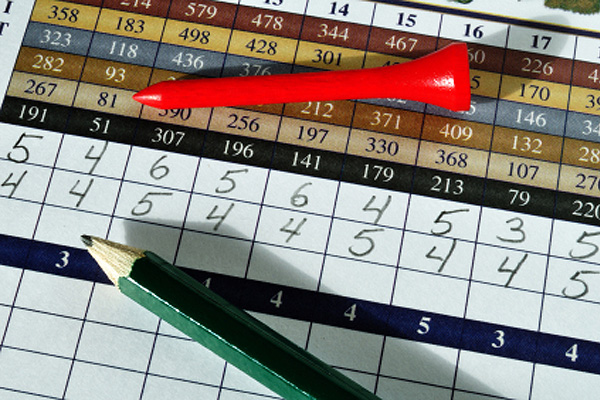One of the best things about golf is that, no matter your ability, the handicap system – banditry aside of course – allows all golfers, no matter their ability, to compete on an even playing field.
As far as strokeplay is concerned, the handicap system is simple. When it comes to matchplay on the other hand, things become slightly more complicated, with golfers of varying abilities seemingly in favour of either a ¾ allowance being employed, or the full difference between the two handicaps in question.
While golf clubs are free to employ whichever handicap allowance they see fit during matchplay competitions, the English Golf Union does strongly urge clubs to comply with their handicap allowance guidelines which were changed as of January 2008.
This means in fourball matches, the lowest handicapped player will concede shots to the other three based on ¾ of the difference between the full handicaps; in foursomes ½ of the difference between the aggregate handicaps of each side is to be used, and in singles, FULL DIFFERENCE!
Full difference in singles matchplay has become something of a talking point in golf clubs up and down the country, with; in general, two sets of players either arguing for or against it.
Needless to say, in most cases the lower handicapped golfer will miss the “good old days” when the ¾ allowance was in place in singles matchplay, while higher handicappers are obviously going to enjoy the full difference afforded to them as of 2008.
If you look at it from a mathematical point of view, you can understand the higher handicapper’s concerns. The higher your handicap, the more shots you lose when you take a quarter of it away.
Put yourself in the lower handicapper’s shoes though and you might argue that the 7s, 8s and 9s that you might expect to see on a high handicapper’s strokeplay scorecard don’t mean anything in matchplay. Lose a hole by 1 shot or 5 and the bearing on the match is the same…you simply lose the hole.
Low handicappers will also argue that it is more difficult for them to go out and shoot significantly lower than their handicap than it is for the higher handicapper. In my opinion, it’s far more feasible that a 24 handicapper could go out and shoot, let’s say, 16 over par, than it is for a 4 handicapper to go out and fire it round in 4 under.
Revert back to the higher handicapper’s side of the argument however, and you could also take into account the issue of unused strokes. If you take into account the awarding of strokes according to the stroke indexes of the course, some one-sided matches will be over long before the higher handicapper receives a number of their strokes. Also, according to the EGU, an average of one in three strokes given in matchplay scenarios do not figure in matches either because the hole is won without the stroke or lost in spite of receiving it. To put it simply, in many cases, higher handicappers just don’t use the strokes they are given.
What system do you think should be in place when it comes to singles matchplay? Vote in the poll below…

